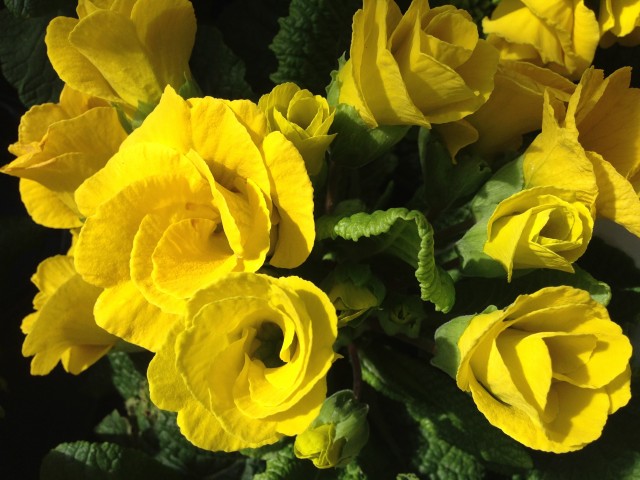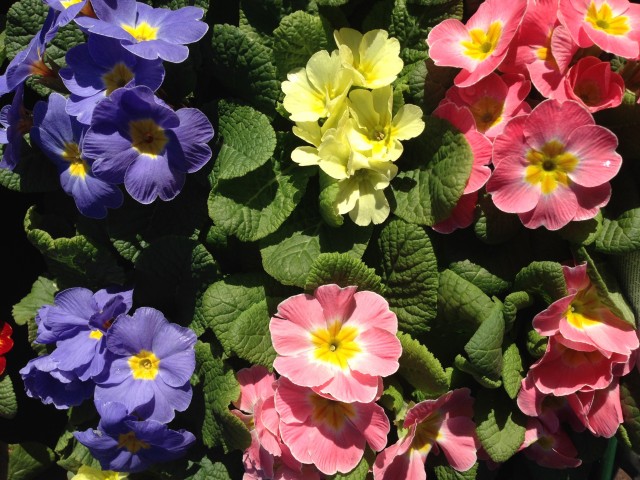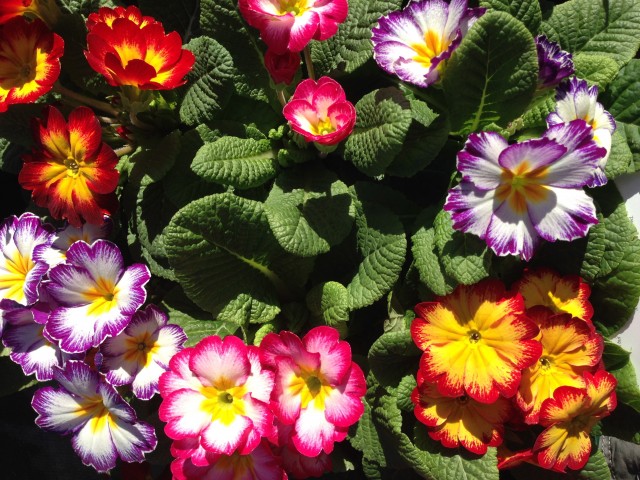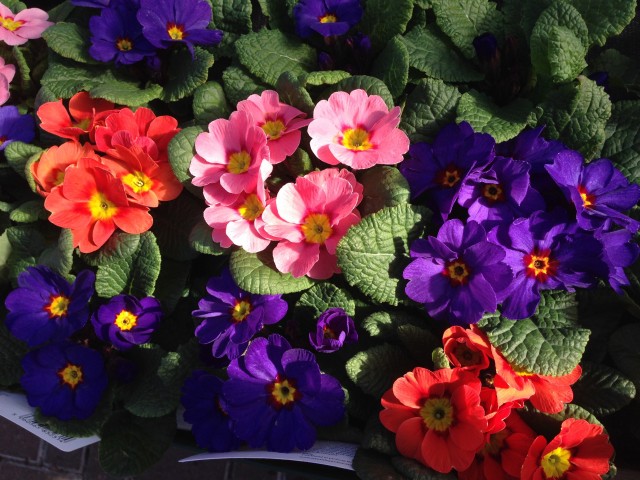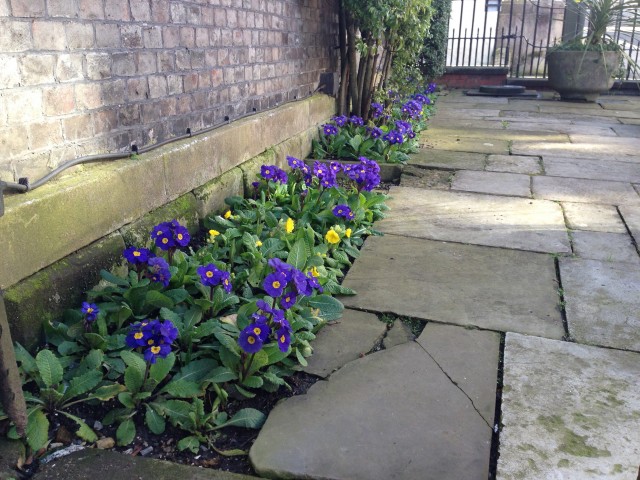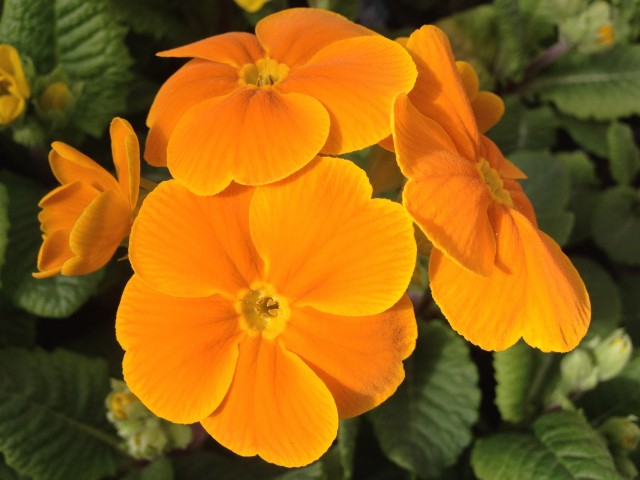We often think of bedding plants as either something carried out by maintenance contracts in our towns and cities, or a very dated type of planting our parents and grandparents still dutifully take part in a few times a year.
History
In fact, bedding has an important place in history. It marks the end of the the English Landscape Garden movement of the 18th and early 19th Centuries, and was very much a significant feature of Victorian gardens. While the lakes and parks spread out into the distance, terraces around the large houses were beginning to be planted up with seasonal bedding, extending the planting seasons and bringing colour to the immediate areas around residences. By the 1820s, Zinnia, begonias, heliotropes, tagetes, petunias and other classic bedding plants were introduced from foreign climes and here began the change. It was reported that by 1844, Verbena chamaedrifolia (re-classified as Verbena peruviana) was on every balcony in London! As plantspeople’s breeding skills increased and with the removal of the Glass tax in the 1840s allowing increased use of glasshouses, gardeners of the rich were able to create extensive, complex geometric schemes that bore no links to the natural, but were meerly for show. Much like we see in many victorian parks and gardens today.
Plants were bedded out in concentric, eye-catching groupings, with bright colours catching the eye of any onlooker. As bedding increased in popularity, planting in contrasting colours, rather than harmonious schemes was being advocated. And the brighter the better!
This planting style was not for everyone, with Gertrude Jekyll reportedly stating (one day between 1843 & 1932!) ‘It was not the fault of the geranium’ that it was used in such ugly schemes.
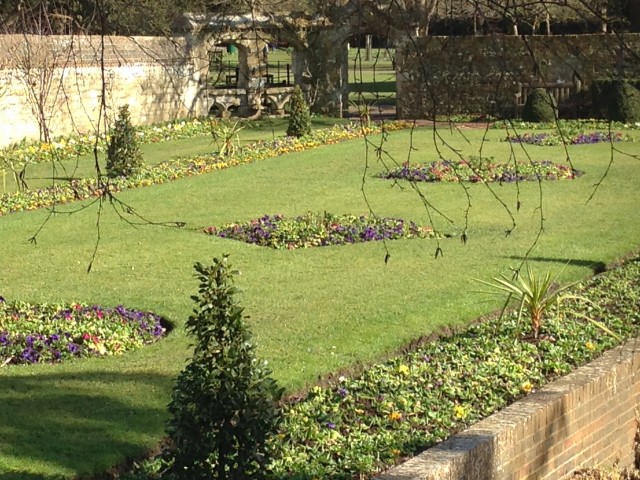
Lewes public garden complete with bedding. Not quite at top performance levels but I will update this image soon
Bedding Today
Bedding has had its place in gardening ever since. Eastbourne Seafront being a well known extant example of a traditional Victorian town still exhibiting traditional bedding and the landscaping team recently won a BALI award for their efforts.
Now we are in March, the garden centres are heaving with bedding of all colours. Primulas, Polyanthus and Violas are wall to wall. Inside – in the warmth – you will find plug plants of the more tender hanging basket and container plants, all presented in colour combinations for your ease.
How to Create a Great Display
You will need to maintain these plants. They are like your high maintenance friend. They won’t be nice to you unless you are nice to them, and they expect only the best. They need watering regularly. They need feeding. And they also need to keep looking their best – you will need to deadhead regularly and pick out any dead leaves.
It is easy to just grab packs and stuff them into various containers and hope for the best, but there are some design principles to follow to ensure you create a fabulous and long lasting display. Here are some to think about:
1) Colour Combinations. Are you going for harmonious colours (neighbouring colours on the colour wheel), complimentary colours (colours that are opposites on the colour wheel) or are you going to choose single colour (monochrome) but different hues? Just grabbing colours because you like them doesn’t always work unless you integrate a bit of colour theory.
2) Location. Are you filling in gaps in some the perennial borders while they get into gear this spring? Are you staging with some pots? Do you want to add early colour to a view from a window, or create a warm welcome outside your front door. Pay careful attention to maximise these little plants. Give them the opportunity to perform well for you.
3) Scale. A single tall daffodil looming over a stunted primula is not a look. But a sea of croci, snowdrops bulked up some polyanthus are all in similar scale, and so long as you have chosen simple colours – purple croci, white snowdrops and indigo polyanthus, you will have yourself something beautiful to look at.
4) Rhythm. This applies to any planting. I buy packs of same colour bedding plants. Then I can ‘knit’ them through my beds and borders and create rhythm. Lots of individually planted, different coloured violas and primulas looks messy. Its much more restful on the eye if you create rhythm. Less really is more when it comes to colours and species.
We hope you are all starting to get the gardening bug again now spring is on its way. The change in our gardens may be millimetre by millimetre at the moment, but soon it will go exponential.
Do call us if you are stuck with what do with your garden. Having a design done really does make the difference between a garden that you find yourself saying ‘oh, it would be nice to sit in the garden…but we haven’t had chance to get on with it’ while ferrying a guest to a chair at the kitchen table, to ‘hey, lets go and sit in the garden. It is looking fab right now’.

